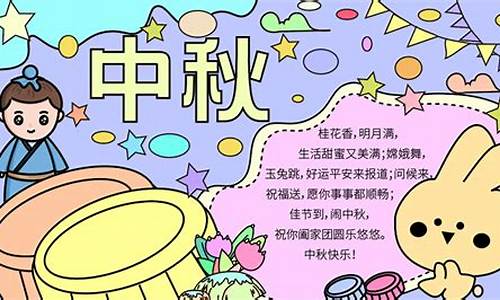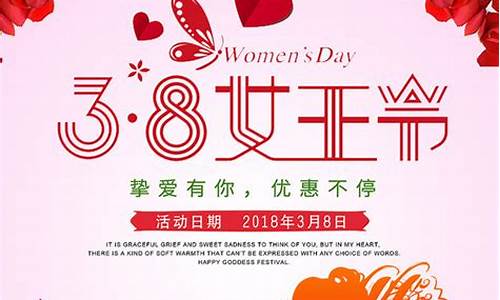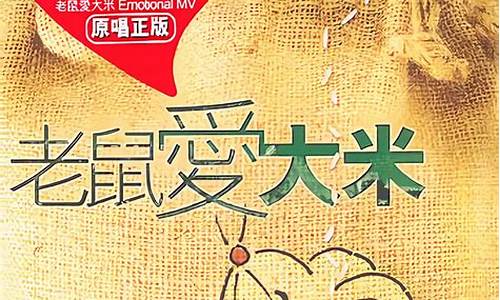您现在的位置是: 首页 > 优秀作文 优秀作文
为中秋节做个简单的介绍
zmhk 2024-06-06 人已围观
简介为中秋节做个简单的介绍 感谢大家提供这个为中秋节做个简单的介绍问题集合,让我有机会和大家交流和分享。我将根据自己的理解和学习,为每个问题提供清晰而有条理的回答。1.介绍中秋节50字左右2.中秋节英语介绍简短5句怎么说?3.中秋节风俗简介30
感谢大家提供这个为中秋节做个简单的介绍问题集合,让我有机会和大家交流和分享。我将根据自己的理解和学习,为每个问题提供清晰而有条理的回答。
1.介绍中秋节50字左右
2.中秋节英语介绍简短5句怎么说?
3.中秋节风俗简介30个字
4.中秋节英语介绍简短10句

介绍中秋节50字左右
中秋节是中国的传统节日。中秋节,又称祭月节、月光诞、月夕、秋节、中秋节、拜月节、月娘节、月亮节、团圆节等,是中国四大传统节日之一,日期在农历的八月十五日。中秋节起源于上古时代,普及于汉代,定型于唐朝初年,盛行于宋朝以后。中秋节自古便有祭月、赏月、吃月饼、玩花灯、赏桂花、饮桂花酒等民俗,流传至今,经久不息。
根据中国的历法,农历八月在秋季中间,为秋季的第二个月,称为“仲秋”,而八月十五又在“仲秋”之中,所以称“中秋”。据考证,最初“祭月节”是定在干支历二十四节气“秋分”这天,不过由于这天在夏历八月里的日子每年不同,不一定都有圆月,后来就将“祭月节”由“秋分”调至夏历(农历)八月十五日。
中秋节的习俗介绍
1、走月
中秋节之夜有一大特色赏月活动叫“走月”。皎洁的月光下,人们衣着华美,三五结伴,或游街市,或泛舟秦淮河,或登楼观赏月华,谈笑风生。
2、祭月
祭月,在中国是一种十分古老的习俗,实际上是古人对“月神”的一种崇拜活动。在古代有“秋暮夕月”的习俗。夕月,即拜祭月神。
3、赏月
赏月的风俗来源于祭月,严肃的祭祀变成了轻松的欢娱。据说此夜月球距地球最近,月亮最大最圆最亮,所以从古至今都有饮宴赏月的习俗;回娘家的媳妇是日必返夫家,以寓圆满、吉庆之意。
4、追月
追月也是中秋一习俗,所谓“追月”,即过了农历八月十五,兴犹未尽,于是次日的晚上,不少人又邀约亲朋好友,继续赏月,名为“追月”。
以上内容参考:百度百科-中秋节
中秋节英语介绍简短5句怎么说?
中秋节的介绍30字左右:八月中秋,农作物和各种果品陆续成熟,农民为了庆祝丰收,表达喜悦的心情,就以“中秋”这天作为节日。中秋节,为每年农历八月十五,又称月夕、秋节、仲秋节、八月节、八月会、追月节、玩月节、拜月节、女儿节或团圆节,是流行于中国众多民族与汉字文化圈诸国的传统文化节日,时在农历八月十五;因其恰值三秋之半,故名,也有些地方将中秋节定在八月十六。
中秋节始于唐朝初年,盛行于宋朝,至明清时,已成为与春节齐名的中国主要节日之一。
中秋节的传说
中秋节有悠久的历史,和其它传统节日一样,也是慢慢发展形成的,古代帝王有春天祭日,秋天祭月的礼制,早在《周礼》一书中,已有“中秋”一词的记载。
后来贵族和文人学士也仿效起来,在中秋时节,对着天上又亮又圆一轮皓月,观赏祭拜,寄托情怀,这种习俗就这样传到民间,形成一个传统的活动,一直到了唐代,这种祭月的风俗更为人们重视,中秋节才成为固定的节日,《唐书·太宗记》记载有“八月十五中秋节”。
这个节日盛行于宋朝,至明清时,已与元旦齐名,成为我国的主要节日之一,中秋节的传说是非常丰富的,嫦娥奔月,吴刚伐桂,玉兔捣药之类的神话故事流传甚广。
中秋节风俗简介30个字
中秋节英语介绍简短5句:1、To the Chinese, Mid-Autumn Festival means family reunion and peace. The festival is celebrated when the moon is believed to be the biggest and fullest. To the Chinese, a full moon is a symbol of prosperity, happiness, and family reunion.
对中国人来说,中秋节意味着团聚、平安。人们觉得,中秋节的月亮最大、最圆。满月象征着繁荣、幸福和团圆。
2、Many traditional and meaningful celebrations are held in most households in China, and China's neighboring countries. The main traditions and celebrations include eating mooncakes, having dinner with family, gazing at and worshipping the moon, and lighting lanterns.
大部分中国家庭以及中国的邻国都会举行许多传统的庆祝活动,主要庆祝方式包括吃月饼,吃团圆饭,赏月和点灯笼。
3、Mid-Autumn Festival has a history of over 3,000 years, dating back to moon worship in the Shang Dynasty (1600–1046 BC). It’s such an important festival that many poems were written about it, stories and legends about the festival are widespread, and its origins have been guessed at and explained by generations of Chinese.
中秋节有三千多年历史,可以追溯到商代时对月亮的崇拜。因为中秋节的重要地位,历代诗人都会为中秋节写诗,关于中秋节的故事、传奇在民间广为流传,中秋节的起源也被历代中国人探究。
4、The term "Mid-Autumn" first appeared in the book Rites of Zhou (周礼), written in the Warring States Period (475–221 BC). But the term only related to the time and season; the festival didn't exist at that point.
“中秋”一词最早出现在战国时期《周礼》一书中,但是该词只和时间和季节有关,当时还没有中秋节。
5、In the Tang Dynasty (618–907 AD), it was popular to appreciate the moon. Many poets liked to create poems related to the moon when appreciating it. There is a legend that Emperor Xuanzong of the Tang Dynasty visited the Moon Palace in his dream and heard a wonderful song.
唐代时赏月风靡,诗人在赏月之时佳作连连。据传,唐玄宗曾在梦中去往月宫并听到优美的歌声。
中秋节英语介绍简短10句
中秋节风俗:农历八月十五日,是我国传统的中秋节,也是我国仅次于春节的第二大传统节日,八月十五恰在秋季的中间,故谓之中秋节。据《周礼》记载,周代已有“中秋夜迎寒”、“秋分夕月(拜月)”的活动;农历八月中旬,又是秋粮收获之际,人们为了答谢神祗的护佑而举行一系列仪式和庆祝活动,称为“秋报”,中秋时节,气温已凉未寒,天高气爽,月朗中天,正是观赏月亮的最佳时令。
因此,后来祭月的成分便逐渐为赏月所替代,祭祀的色彩逐渐褪去,而这一节庆活动却延续下来,并被赋予了新的含义,北宋时期,正式定八月十五为中秋节,明清时期,中秋始与元旦齐名,成为我国仅次于春节的第二大传统节日,在千百年传承中几经流转变换,最终以“阖家团圆”的精神指向成为今天中秋节的主要文化内涵。
节日起源
中秋节是由天子夕月、秋社、赏月以及月宫的传说等多种风俗事项汇合而成的,它起源于先秦,最后定型于唐朝。
夕月即古代天子秋分祭祀月亮。《周礼·春官宗伯·典瑞》郑玄注:“天子常春分朝日,秋分夕月。”《史记·孝武本纪》裴骃集解引应劭语曰:“天子春朝日,秋夕月,拜日东门外。朝日以朝,夕月以夕。”现在北京的月坛,原名夕月坛,就是明清皇帝秋分祭月的场所。
由于秋分的晚上不一定有月亮,有月亮也不一定圆,未免大煞风景,于是民间渐渐把秋分祭月放到中秋了。
中秋节英语介绍简短10句如下:The Mid-Autumn Festival: The Mid-Autumn Festival, also known as the Moon Festival, is one of the most important traditional Chinese festivals.
Lunar Calendar Celebration: It falls on the 15th day of the eighth lunar month, when the moon is at its fullest and brightest, symbolizing unity and completeness.
Family Reunions: The festival is a time for families to gather together, similar to Thanksgiving in Western cultures, expressing gratitude for the harvest and the blessings of the year.
Mooncakes: One of the central customs involves sharing and enjoying mooncakes, which are round pastries filled with sweet fillings like lotus seed paste and salted egg yolks. They represent the full moon and the unity of the family.
Lanterns and Decorations: Colorful lanterns, often handcrafted and beautifully adorned, are hung both indoors and outdoors. They create a festive ambiance and are sometimes released into the sky, illuminating the night.
Chang'e and Hou Yi: The festival is associated with various legends, including the story of Chang'e, the Moon Goddess, and her husband Hou Yi, the great archer. These legends add depth and meaning to the celebration.
Traditional Activities: Dragon and lion dances, as well as other cultural performances, are held in many places. These activities bring communities together and add vibrancy to the festivities.
Moon Gazing: People often enjoy moon gazing during this time, believing that the moon is at its most beautiful. It's a moment for contemplation and making wishes.
Festival Foods: In addition to mooncakes, families prepare various delicious dishes, emphasizing the cultural importance of sharing meals with loved ones.
Modern Significance: In contemporary times, the Mid-Autumn Festival serves as a reminder of the importance of family, love, and togetherness. It's a time for expressing good wishes, strengthening bonds, and creating cherished memories.
好了,今天关于“为中秋节做个简单的介绍”的话题就讲到这里了。希望大家能够对“为中秋节做个简单的介绍”有更深入的认识,并从我的回答中得到一些启示。如果您有任何问题或需要进一步的信息,请随时告诉我。









